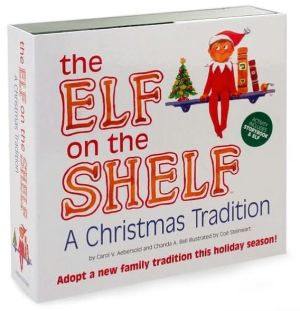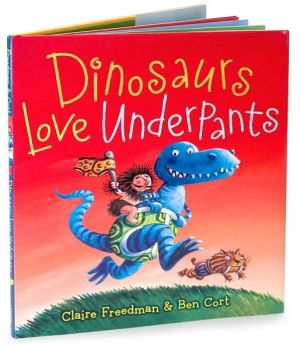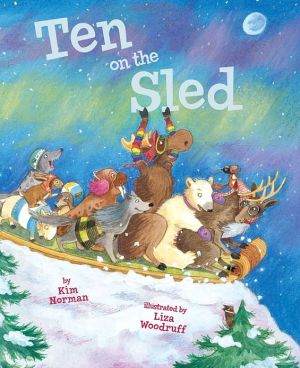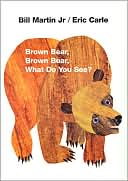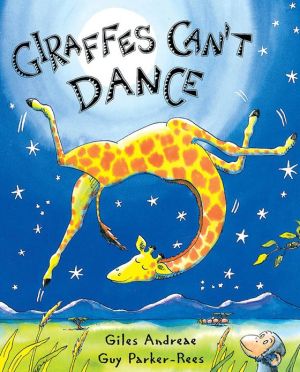The Three Questions
With his stunning watercolors -- and text that resounds with universal truths, award-winning artist Jon J Muth has transformed a story by Tolstoy into a timeless fable for young readers.\ What is the best time to do things? Who is the most important one? What is the right thing to do? Nikolai knows that he wants to be the best person he can be, but often he is unsure if he is doing the right thing. So he goes to ask Leo, the wise turtle. When he arrives, the turtle is struggling to dig in his...
Search in google:
What is the best time to do things? Who is the most important one? What is the right thing to do? Nikolai knows that he wants to be the best person he can be, but often he is unsure if he is doing the right thing. So he goes to ask Leo, the wise turtle. When he arrives, the turtle is struggling to dig in his garden, and Nikolai rushes to help him. As he finishes work, a violent storm rolls in. Nikolai runs for Leo's cottage, but on his way, he hears cries for help from an injured panda. Nikolai brings her in from the cold, and then rushes back outside to rescue her baby too.Publishers WeeklyMuth (Come On, Rain!) recasts a short story by Tolstoy into picture-book format, substituting a boy and his animal friends for the czar and his human companions. Yearning to be a good person, Nikolai asks, "When is the best time to do things? Who is the most important one? What is the right thing to do?" Sonya the heron, Gogol the monkey and Pushkin the dog offer their opinions, but their answers do not satisfy Nikolai. He visits Leo, an old turtle who lives in the mountains. While there, he helps Leo with his garden and rescues an injured panda and her cub, and in so doing, finds the answers he seeks. As Leo explains, "There is only one important time, and that time is now. The most important one is always the one you are with. And the most important thing is to do good for the one who is standing at your side." Moral without being moralistic, the tale sends a simple and direct message unfreighted by pomp or pedantry. Muth's art is as carefully distilled as his prose. A series of misty, evocative watercolors in muted tones suggests the figures and their changing relationships to the landscape. Judicious flashes of color quicken the compositions, as in the red of Nikolai's kite (the kite, released at the end, takes on symbolic value). An afterword describes Tolstoy and his work. Ages 6-up. (Apr.) Copyright 2001 Cahners Business Information.
\ From Barnes & NobleWhat is the best time to do things? Who is the most important one? What is the right thing to do? Russian thinker Leo Tolstoy's three questions can be applied to nearly every situation or opportunity in life. The Nikolai of this charming picture book asks them of Leo, a superlatively wise turtle. The Three Questions offers answers with child-sized examples that we can all understand.\ \ \ \ \ From the PublisherThe Three Questions Muth (Come On, Rain!) recasts a short story by Tolstoy into picture-book format substituting a boy and his animal friends for the czar and his human companions. Yearning to be a good person, Nikolai asks, "When is the best time to do things? Who is the most important one? What is the right thing to do?" Sonya the heron, Cogol the monkey and Pushkin the dog offer their opinions, but their answers do not satisfy Nikolai. He visits Leo, an old turtle who lives in the mountains. While there, he helps Leo with his garden and rescues an injured panda and her cub, and in so doing, finds the answers he seeks. As Leo explains, there is only one important time, and that time is now. The most important one is always the one you are with. And the most important thing is to do good for the one who is standing at your side." Moral without being moralistic, the tale sends a simple and direct message unfreighted by pomp or pedantry. Muth's art is as carefully distilled as his prose. A series of misty, evocative watercolors in muted tones suggests the figures and their changing relationships to the landscape. judicious flashes of color quicken the compositions, as in the red of Nikolai's kite (the kite, released at the end, takes on symbolic value). An afterword describes Tolstoy and his work.\ --Publishers Weekly, Feb.11, 2002, starred review\ Nikolai wants to be a good person but believes that he needs guidance. He has three important philosophical questions: "When is the best time to do things? Who is the most important one? What is the right thing to do?" The answers will set him on the right path in life. He first asks his friends the heron, the monkey, and the dog, but their answers are colored by their own survival needs, and are helpful but not definitive. He goes to Leo the turtle, who is old and very wise. Nikolai's experiences while visiting Leo help him to find his own answers. Leo only needs to put them in words. Muth has created a magical work of depth and beauty. The deceptively simple plot is written in language that is filled with visual and auditory imagery, and yet remains accessible to young readers. The delicate watercolor paintings are exquisite. Humans, animals, and nature are depicted with supreme accuracy, while evoking a soft, gentle, dream-like quality. There are many subtle nuances that catch the eye and ear. A red kite floats through the pages, appearing, disappearing, and reappearing, but never mentioned in the text. Sometimes only the string in Nikolai's hand is seen, and sometimes only the kite itself with the string trailing down. It is not seen at all during his adventures at Leo's home, but he has brought it there. Even the characters' names-Gogol, Leo, Pushkin, Sonya, and Nikolai-are carefully chosen to pay homage to famous Russians or their creations. As for the answers to Nikolai's questions: they're just right. A soaring achievement.--Kirkus Reviews, March 2002, starred review In Tolstoy's original story a tsar asks three questions (What is the best time to do things? Who is the most important one? What is the right thing to do?), and he finds the answers when he unknowingly saves his enemy. Muth's gentler, simpler version is closer to a fable about a boy and his animal friends. Beautiful, playful watercolor paintings show Nikolai with heron Sonya, monkey Gogol, and dog Pushkin on the shore. The animals can't really answer the big questions so Nikolai hikes into the mountains to consult wise old turtle Leo--and while Nikolai is there, he saves a panda and her child in a roaring storm, finding his answers. Muth's large-size paintings are open and beautiful. Some of the soft-toned landscapes are like Japanese paintings, with sharply defined characters against blurry views of water, mountain and sky. Children will want to talk about the questions and answers, though a version closer to Tolstoy's original would have been more compellig: What if\ \ \ \ Publishers WeeklyMuth (Come On, Rain!) recasts a short story by Tolstoy into picture-book format, substituting a boy and his animal friends for the czar and his human companions. Yearning to be a good person, Nikolai asks, "When is the best time to do things? Who is the most important one? What is the right thing to do?" Sonya the heron, Gogol the monkey and Pushkin the dog offer their opinions, but their answers do not satisfy Nikolai. He visits Leo, an old turtle who lives in the mountains. While there, he helps Leo with his garden and rescues an injured panda and her cub, and in so doing, finds the answers he seeks. As Leo explains, "There is only one important time, and that time is now. The most important one is always the one you are with. And the most important thing is to do good for the one who is standing at your side." Moral without being moralistic, the tale sends a simple and direct message unfreighted by pomp or pedantry. Muth's art is as carefully distilled as his prose. A series of misty, evocative watercolors in muted tones suggests the figures and their changing relationships to the landscape. Judicious flashes of color quicken the compositions, as in the red of Nikolai's kite (the kite, released at the end, takes on symbolic value). An afterword describes Tolstoy and his work. Ages 6-up. (Apr.) Copyright 2001 Cahners Business Information.\ \ \ \ \ Children's LiteratureNikolai seeks the answers to three questions—when is the best time to do something, who is the most important one and what is the right thing to do? To answer these questions is to know how to be a good person. His well-meaning friends a heron, a monkey, and a dog try to help him but the boy knows he should seek the wisdom of the wise old turtle, Leo. In helping the turtle dig his garden and rescuing an injured panda and later her cub, Nikolai finds the answers and the inner peace he seeks. The one important time is now, the important one is the one you are with, and the most important thing to do is to do good for the one at your side. Based on a Leo Tolstoy short story, the spiritual philosophy of Zen is wrapped inside a simple but compelling story. Handsome watercolors by the author reflect the Asian influence. Young children will not grasp the deeper meaning of the story but will enjoy it as a satisfying journey of discovery.\ —Beverley Fahey\ \ \ \ \ School Library JournalGr 1-4-Young Nikolai questions Sonya, the heron; Gogol, the monkey; and Pushkin, the dog: "When is the best time to do things? Who is the most important one? What is the right thing to do?" Unsatisfied with their responses, he seeks answers from Leo, an old turtle living alone high in the mountains. He helps dig a garden and rescues a distressed panda and her cub in a storm. While the boy feels peace, he still doesn't have his answers, but Leo explains to Nikolai that if he hadn't stayed to dig, he wouldn't have heard the panda's cries for help. Therefore, at that moment, the important time was spent digging, the turtle was the most important one, and helping in the garden was the right thing. Later, saving the panda and her child were most important. So, now is the most important time, and the one you are with is most important, as is doing good for that one. Muth's languid watercolors, some sketchy and others fully developed, are vaguely Chinese in setting, and become less dramatic and more ethereal as the story moves toward its thematic statement. An author's note explains the derivation of the names and sources of the story, and gives a short statement about Tolstoy. This is a fanciful though not wholly convincing presentation of a Zenlike concept of what's truly important that would at the very least inspire discussion.-Susan Hepler, Burgundy Farm Country Day School, Alexandria, VA Copyright 2002 Cahners Business Information.\ \ \ \ \ Kirkus ReviewsNikolai wants to be a good person but believes that he needs guidance. He has three important philosophical questions: "When is the best time to do things? Who is the most important one? What is the right thing to do?" The answers will set him on the right path in life. He first asks his friends the heron, the monkey, and the dog, but their answers are colored by their own survival needs, and are helpful but not definitive. He goes to Leo the turtle, who is old and very wise. Nikolai's experiences while visiting Leo help him to find his own answers. Leo only needs to put them in words. Muth has created a magical work of depth and beauty. The deceptively simple plot is written in language that is filled with visual and auditory imagery, and yet remains accessible to young readers. The delicate watercolor paintings are exquisite. Humans, animals, and nature are depicted with supreme accuracy, while evoking a soft, gentle, dream-like quality. There are many subtle nuances that catch the eye and ear. A red kite floats through the pages, appearing, disappearing, and reappearing, but never mentioned in the text. Sometimes only the string in Nikolai's hand is seen, and sometimes only the kite itself with the string trailing down. It is not seen at all during his adventures at Leo's home, but he has brought it there. Even the characters' names-Gogol, Leo, Pushkin, Sonya, and Nikolai-are carefully chosen to pay homage to famous Russians or their creations. As for the answers to Nikolai's questions: they're just right. A soaring achievement. (Picture book. 6-10)\ \
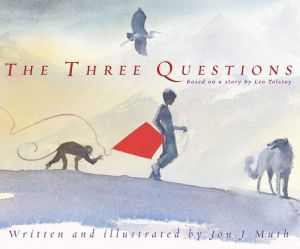
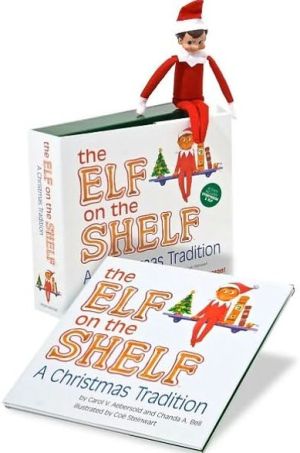
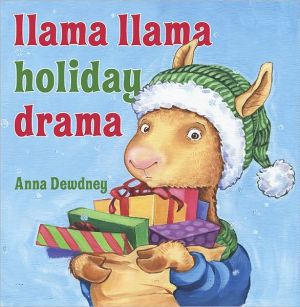
![Tickle Monster Laughter Kit [With Tickle Mitts] Tickle Monster Laughter Kit [With Tickle Mitts]](/application/data/covers/98/35/9781932319835.jpg)
